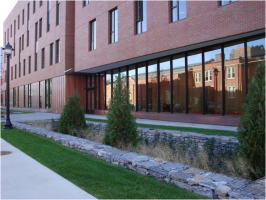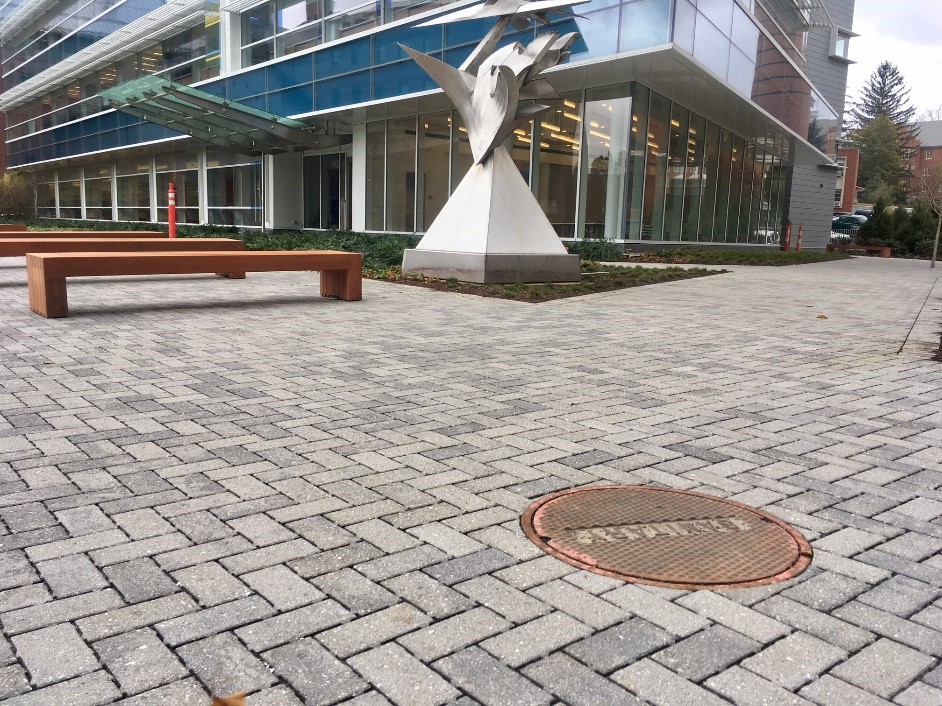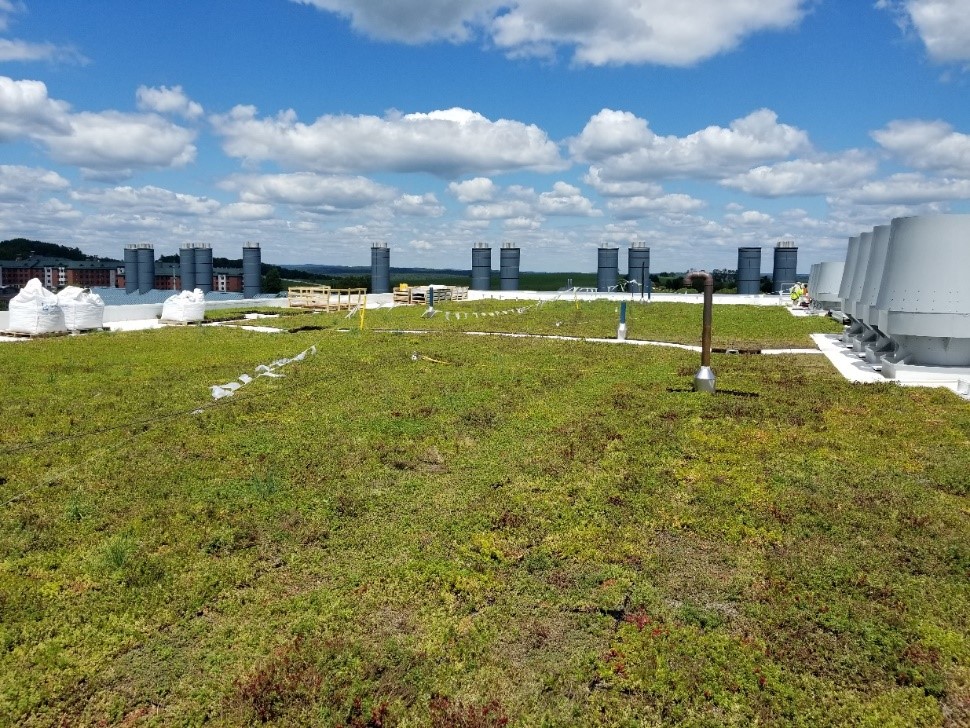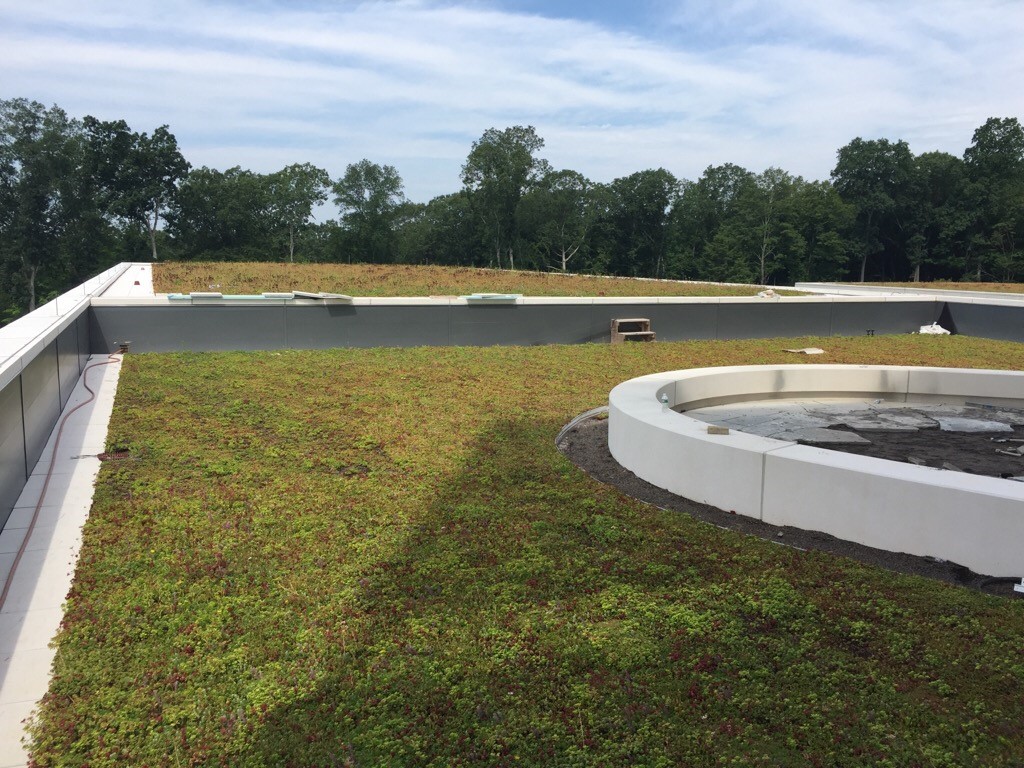 Low impact development (or design) (LID) is a key component of UConn's commitment to sustainable management and growth. The University continues to seek out new opportunities to further incorporate low-impact design into the University's current construction and renovation projects.
Low impact development (or design) (LID) is a key component of UConn's commitment to sustainable management and growth. The University continues to seek out new opportunities to further incorporate low-impact design into the University's current construction and renovation projects.
LID is a simple concept - designing and undertaking land re/development in a way that minimizes the effect of rain water run-off and contaminants that modify and pollute our rivers, streams and harbors. These designs can also be designated to lessen our impacts on other aspects of the environment, including physical waste reduction through composting and recycled building materials.
Also, be sure to check out the LID tour that was developed by the Natural Resources Conservation Academy, a summer program for high school students who are mentored by faculty and graduate students from the Dept. of Natural Resources and the Environment.
LID Goals
 The University of Connecticut is pursuing many initiatives to reduce environmental degradation and encourage smart building throughout campus. Current university goals include:
The University of Connecticut is pursuing many initiatives to reduce environmental degradation and encourage smart building throughout campus. Current university goals include:
- Identify opportunities to further incorporate LID components in the University's current construction and renovation projects.
- Record and photo-document storm water management practices currently employed at the University to demonstrate compliance and best practices.
- Explore the potential for implementing "green roofs" at various locations, including the new library at the Avery Point campus and the new Bolton Road parking garage.
- Serve as an advisory figure in the upcoming North Campus planning process, guiding UConn's growth while remaining sensitive to our environmental "footprint."
Initiatives and Progress
In March 2007, the University of Connecticut adopted an additional Sustainable Design & Construction Policy, which specifies the University's objectives to plan, design, construct, renovate and maintain sustainable, energy- and water-efficient buildings.
- Composting: The agricultural composting facility has been operating since late-August 2010 and, according to Farm Services, is composting more manure, leaves and landscaping waste than was originally projected – at the rate of about 70 tons of manure and 20 yards of leaves/landscaping waste per windrow.
- Burton Family Football Complex and Mark R. Shenkman Training Center: The Burton/Shenkman facility has been a phenomenal success. The joint building was the first NCAA LEED registered building and the first LEED Silver certified NCAA facility.
- The North Hillside Road Extension Project: The University is working with Fuss & O'Neill, the project's environmental consultants, to outline an implementation plan including low-impact development features relating to site selection, promotion of alternative transportation, sustainable management and re-use of stormwater, overall water efficient design and light pollution reduction.
- Raingardens: UConn has two Raingardens located in the Towers area and near Mansfield Apartments. Raingardens protect water quality by infiltrating stormwater, which treats pollutants and reduces erosion from runoff to storm drains that eventually discharge to campus lakes, rivers and streams. Click here to view the invoice for the plantings for the Mansfield apartment rain garden plants, paid for by the Campus Sustainability Fund.
-

Workers from Greenwood Industries of Millbury MA plant the green roof of the west classroom building on May 2, 2011. (UConn Photo/Peter Morenus) Arjona-Monteith and Torrey Life Sciences Renovation Projects: The Office of Environmental Policy has submitted applications for Kresge grant funding to support the inclusion of green building materials in both of these construction projects.
- Green Roofs: The UConn Storrs campus has a total of three green rooves, located on the Gant Science Complex, Laurel Hall, Storrs Hall, and NextGen Residence Hall. Green rooves: contribute to total permeable surface area, reducing stormwater runoff; provide greater insulation, reducing the cost of heating and cooling; and increase biodiversity, reduce heat-islands, and create educational opportunities.
- Porous Pavers: Porous concrete and permeable asphalt parking lots were installed in the summer of 2009 outside the Greer Field House and Towers Residence Halls as well as around Oak and Laurel Hall. In addition, a porous snow shelf was installed along Hillside Road and Connecticut's first porous asphalt parking lot are located in the Towers area.
- Bioretention Swales: Bioretention swales have been installed beside Oak and Laurel Hall, promoting rainwater harvesting and remediation. These protect water quality by reducing stormwater runoff and resulting pollution and erosion from storm drains that discharge to campus lakes and streams.



LID Tour
Click here to view a map of current UConn LID Projects. Thank you to CT NEMO for putting this tour together!
